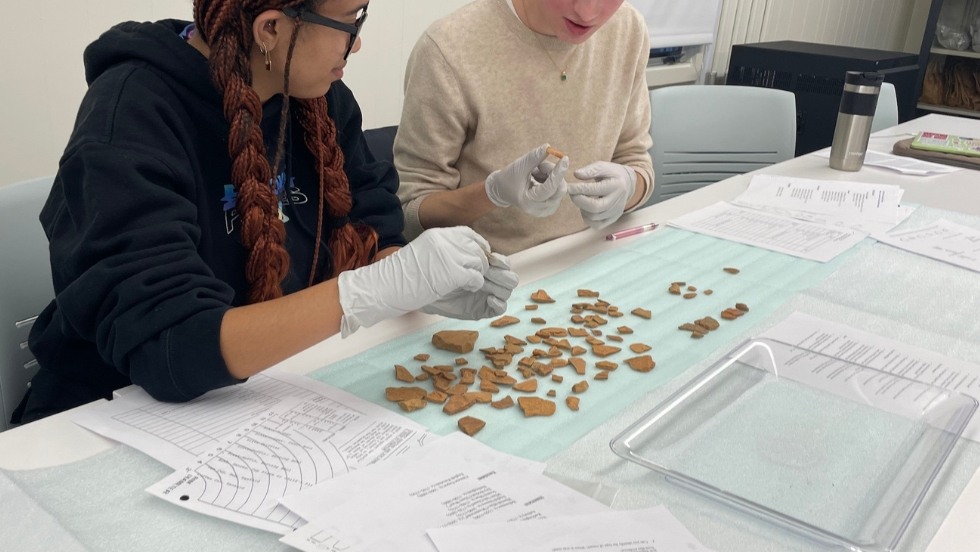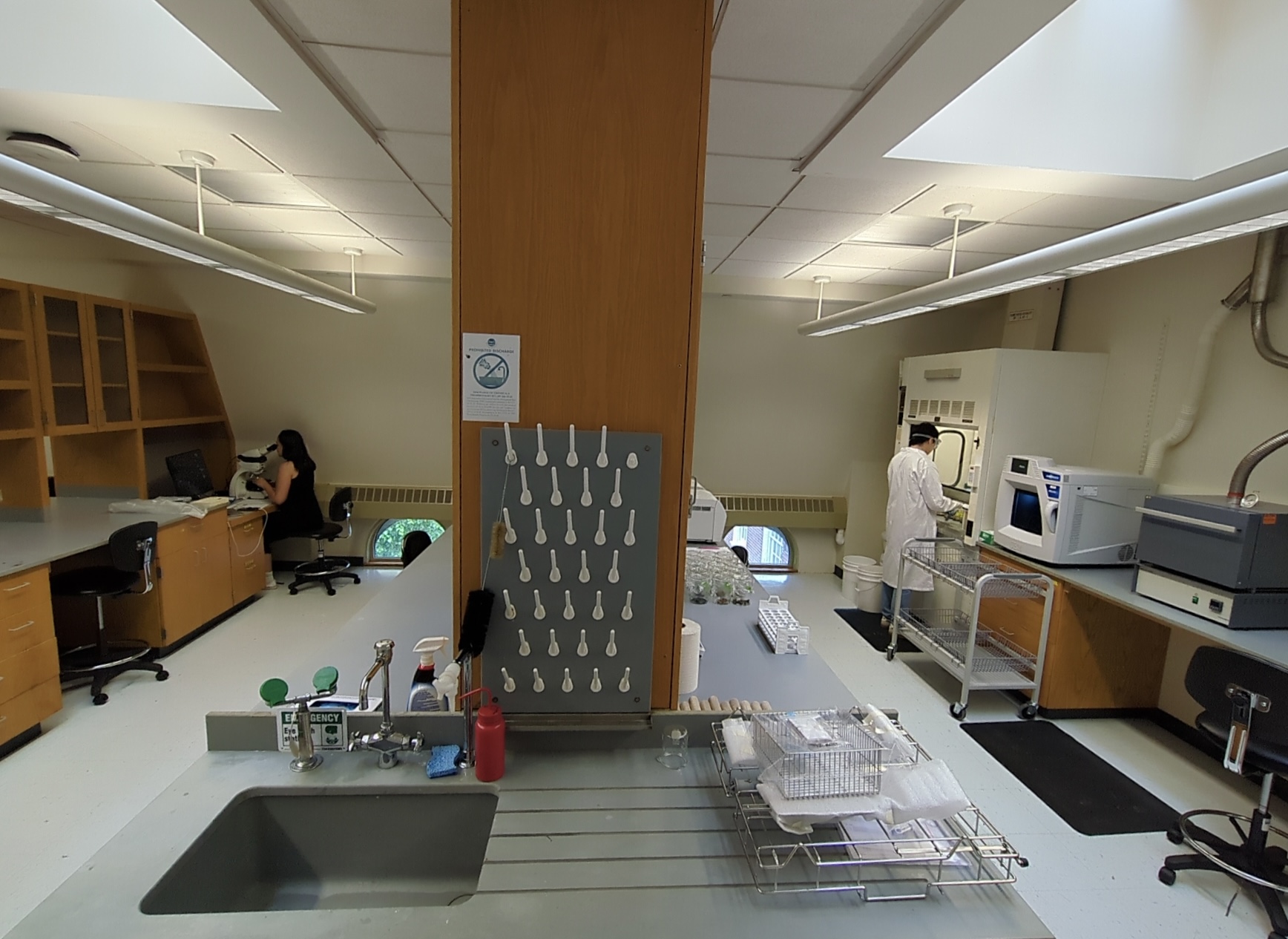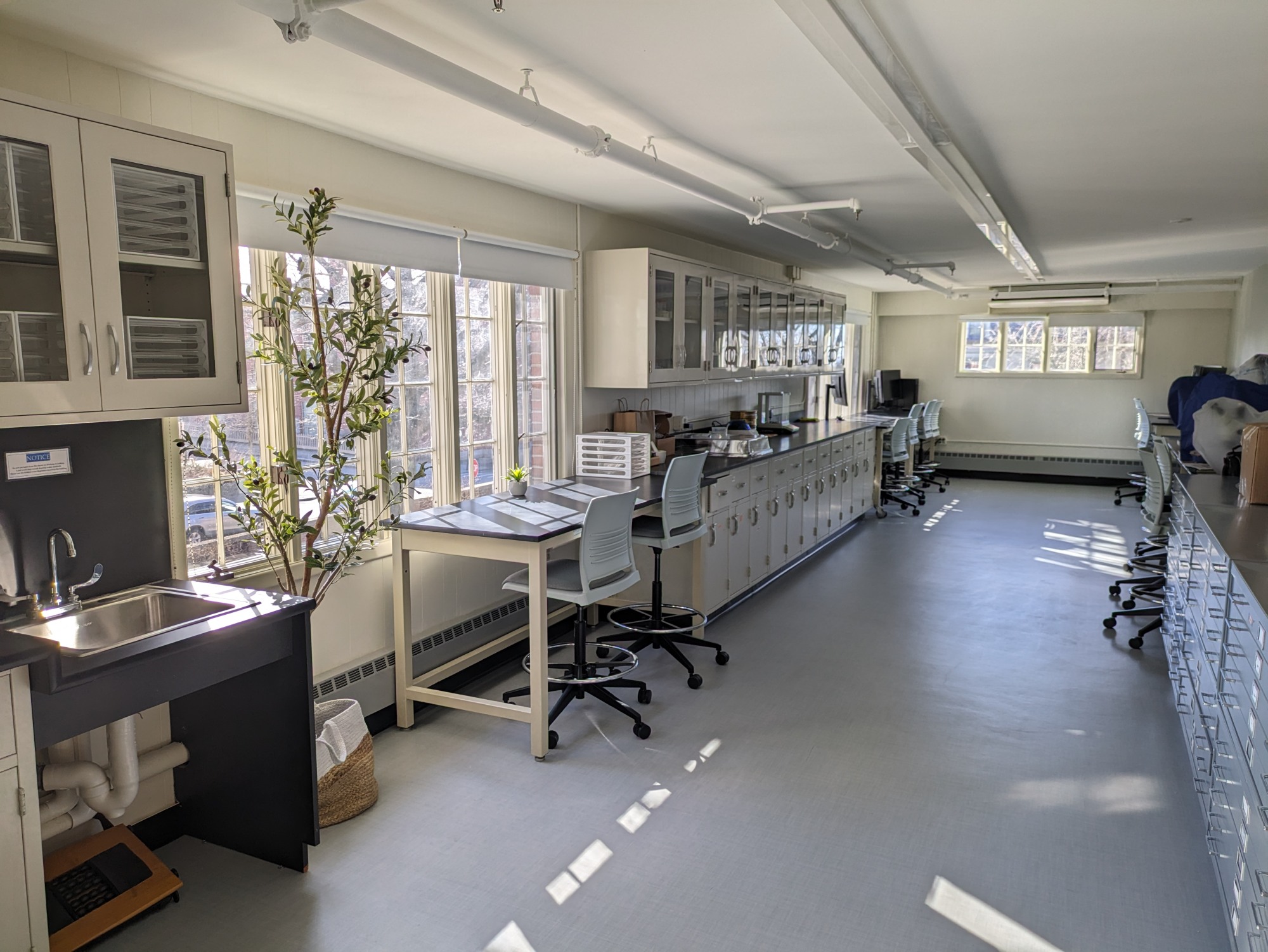Anthropology
Anthropology Labs
Sub Navigation

1
of
3
Students in the Historical Archaeology Lab (HA Lab) examine redware shards from the Cocumscussoc Collection.

2
of
3
Students in the Historical Archaeology Lab (HA Lab) examine redware shards from the Cocumscussoc Collection.

3
of
3
A student uses equipment in the Integrated Laboratory for Archaeological Sciences (ILAS).



